As a homeowner, I know firsthand how frustrating it can be to deal with urine stains on bathroom walls. Not only do they look unsightly, but they can also cause unpleasant odors and even damage the walls over time. Fortunately, there are several effective ways to protect bathroom walls from urine and prevent these issues from occurring.
One of the main causes of urine damage to bathroom walls is improper aim or splashing, which can occur when using the toilet. To prevent this, there are several solutions available, including toilet splash guards and partitions between walls and toilets. Additionally, using waterproof caulking, plastic sheets, or essential oils can help protect the walls from urine damage.
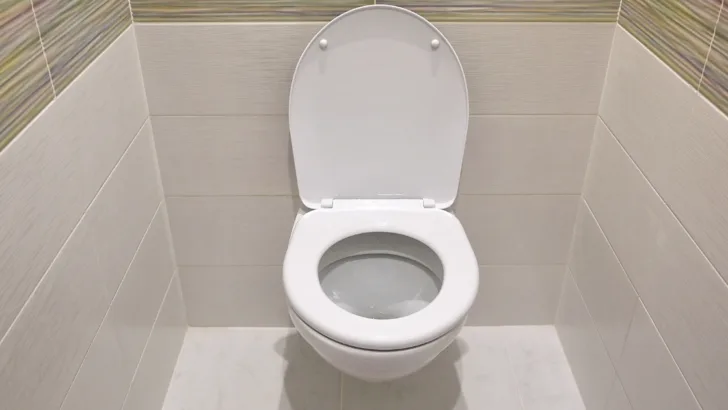
If you’re looking for a more long-term solution, consider using glossy paints, anti-pee paints, or wall paneling. These options can provide a durable and attractive barrier against urine stains and damage. With the right approach, you can protect your bathroom walls from urine and ensure a clean and hygienic space for you and your family.
Key Takeaways
- There are several effective ways to protect bathroom walls from urine damage, including using toilet splash guards, partitions, and waterproof materials.
- Long-term solutions such as glossy paints, anti-pee paints, and wall paneling can provide durable protection against urine stains and damage.
- Protecting your bathroom walls from urine can help prevent unpleasant odors and the risk of urinary tract and respiratory infections.
How to Protect Bathroom Walls from Urine
When it comes to protecting bathroom walls from urine, there are several methods that can be used. As someone who has dealt with this issue before, I have found the following tips to be the most effective:
- Use glossy or anti-pee paint: Glossy or anti-pee paint is designed to repel urine and prevent it from sticking to the walls. This type of paint is easy to clean and maintain, making it a popular choice for bathrooms.
- Install a toilet splash guard: A toilet splash guard is a simple device that attaches to the front of the toilet bowl and prevents urine from splashing onto the walls. This is a great option for households with young boys who may have trouble aiming.
- Add partitions between walls and toilets: Installing partitions between the walls and toilets can help to prevent urine from getting on the walls. This is especially useful in public restrooms or high-traffic areas where multiple people may be using the same toilet.
- Use waterproof caulking: Applying waterproof caulking around the base of the toilet and along the edges of the walls can help to prevent urine from seeping into the walls and causing damage.
- Consider using tiles or wall paneling: Tiles and wall paneling are both durable and easy to clean, making them a great option for bathrooms. They can also add a decorative touch to the space.

Overall, protecting bathroom walls from urine requires a combination of preventative measures and maintenance. By following these tips, you can help to keep your bathroom walls clean and free from urine stains.
Causes of Urine Damage to Bathroom Walls
As someone who has dealt with urine damage to bathroom walls, I understand the importance of protecting them. Here are some reasons why urine can damage bathroom walls:
Urine is Acidic and Can Etch the Surface of Bathroom Walls
Urine, a highly acidic substance, possesses the surprising ability to gradually etch and deteriorate the surfaces of bathroom walls. This gradual process, triggered by the acidic nature of urine, can lead to unsightly discoloration, peeling paint, and even surface corrosion over time. It’s essential to recognize the potential harm that urine can inflict on your bathroom walls, as well as the factors that contribute to this damage.
To safeguard the aesthetic appeal and structural integrity of your bathroom, proactive measures are crucial. While glossy paints offer a layer of protection, it’s important to note that they may only provide a partial shield against the corrosive effects of urine. In addition to utilizing appropriate paint finishes, consider incorporating preventive practices into your bathroom care routine.
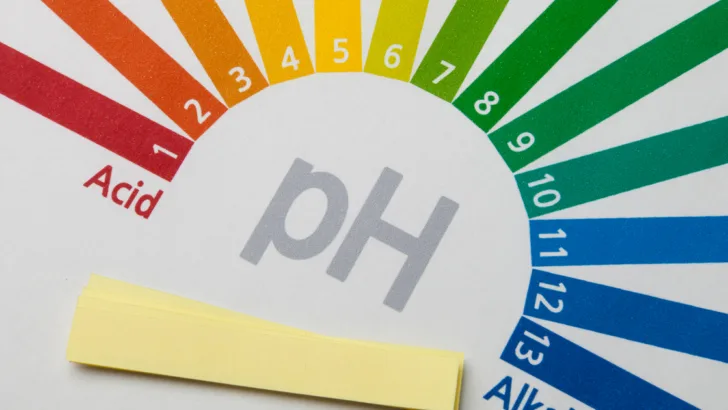
Regular cleaning and prompt removal of urine splatters can significantly mitigate the risk of etching. The application of a protective clear sealant can act as an additional barrier, offering enhanced defense against the acidic properties of urine. Ensuring proper ventilation within the bathroom area can also help reduce the concentration of acidic fumes that may contribute to surface degradation.
By staying informed and proactive, you can preserve the beauty and longevity of your bathroom walls, making them resilient against the potential challenges posed by urine’s acidity.
Urine Can Also Leave a Sticky Residue That Can Attract Mold and Mildew
Beyond its potential to etch surfaces, urine also harbors another sneaky problem that can affect your bathroom environment. As urine dries on walls, it leaves behind a deceptively inconspicuous sticky residue, which, unfortunately, isn’t as benign as it might seem. This residue acts as a magnet for mold and mildew, two unwelcome guests that can thrive in damp, humid conditions.
Mold and mildew are fungi that thrive in moist environments, and the combination of lingering urine residue and the naturally humid atmosphere of bathrooms creates an ideal breeding ground for these nuisances. The nutrients present in urine provide these fungi with sustenance, encouraging their growth and proliferation. The result? Unsightly stains and, often, unpleasant odors can quickly take over your bathroom.

To safeguard your bathroom from the clutches of mold and mildew, proactive measures are essential. Regular cleaning routines that include wiping down walls and surfaces can significantly reduce the chances of urine residue accumulation. Using a gentle yet effective cleaning solution, along with regular ventilation to minimize humidity, can go a long way in deterring the growth of mold and mildew.
In addition, consider applying an anti-mold and mildew sealant to your bathroom walls. This added layer of protection can act as a barrier, preventing the adherence of urine residue and making it more challenging for mold and mildew to establish a foothold. By remaining vigilant and implementing preventive strategies, you can ensure that your bathroom stays fresh, clean, and free from the uninvited company of mold and mildew.
If Urine is Not Cleaned Up Properly, It Can Seep Into the Walls and Cause Structural Damage
The impact of urine on bathroom walls reaches beyond the surface, delving into potential structural repercussions that can lead to costly consequences. When urine is not adequately cleaned up, it possesses the unnerving ability to infiltrate the very walls that define your bathroom’s structure. This infiltration can gradually weaken the walls, rendering them more vulnerable to a double whammy of water damage and mold growth.
As urine seeps into the walls, it compromises their integrity, making them less resistant to the effects of moisture. This weakened state sets the stage for a cascading chain of issues, as increased susceptibility to water damage paves the way for the proliferation of mold—a duo that can spell trouble for both your bathroom’s aesthetics and its structural soundness.
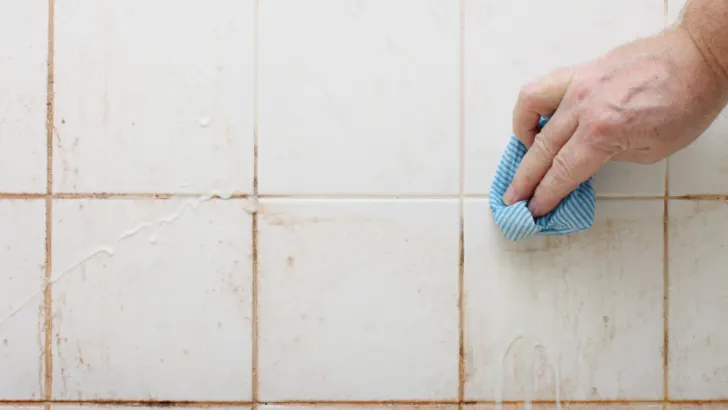
Avoiding this worrisome scenario necessitates timely action. Swift cleanup of any urine spills or splatters is of paramount importance. Addressing the issue promptly prevents urine from penetrating the walls and curbs the potential for structural degradation. Furthermore, a strategic layer of waterproof caulking acts as a robust barrier, fortifying the walls against the intrusion of urine.
For added protection, consider applying a specialized coating infused with essential oils and repellant properties. This innovative approach forms an invisible shield, deterring urine from adhering to the surface and minimizing the potential for stains and damage. By integrating these preventive measures into your bathroom care routine, you can ensure that your walls remain resilient, visually pleasing, and structurally sound.
Remember, a proactive stance today can spare you from costly repairs and renovations in the future, safeguarding both your bathroom’s functionality and your peace of mind.
Solutions for Protecting Bathroom Walls from Urine
As someone who has dealt with urine stains on bathroom walls before, I understand how frustrating and unsanitary it can be. Thankfully, there are several solutions that can help protect your bathroom walls from urine stains.
Install a Urine Guard
Combatting the issue of urine splashing goes beyond cleanup—it involves proactive measures that can make a notable difference in your bathroom’s overall cleanliness. One such effective solution is the installation of a urine guard, a practical addition that can help prevent undesirable splashes from reaching your walls and floor.
Urine guards serve as a simple yet ingenious defense against splatter. By creating a barrier between the toilet and its surroundings, they intercept and redirect any potential splashes, ensuring that urine remains contained within the toilet bowl. This not only contributes to a cleaner bathroom environment but also plays a pivotal role in preserving the integrity of your bathroom’s surfaces.

When considering urine guards, you’ll find a variety of options to choose from, catering to different preferences and needs. Plastic shields that attach to the toilet bowl provide comprehensive coverage, effectively blocking splashes from all angles. Alternatively, splash guards that affix to the front of the toilet seat are designed to specifically target splatter that may occur during use.
Investing in a urine guard is a small step that yields significant results. It promotes a more hygienic and visually appealing bathroom by curbing the occurrence of splashes that can lead to unsightly stains and odors. By incorporating this preventive measure into your bathroom setup, you’re taking a proactive stance toward maintaining cleanliness and elevating your bathroom experience.
Use Waterproof Paint or Sealant on the Walls
Enhancing your bathroom’s defenses against urine-related challenges involves strategic measures that can effectively thwart potential damage. A noteworthy solution is the application of waterproof paint or sealant on the walls, a smart move that can safeguard your bathroom’s surfaces from the infiltrating effects of urine.
Waterproof paint and sealant act as formidable barriers, intercepting urine and preventing it from permeating into the walls. This proactive approach is particularly beneficial in areas prone to moisture exposure, ensuring that your walls remain resilient and unaffected over time. When considering paint options, glossy finishes emerge as an excellent choice, known for their liquid-repelling capabilities that actively discourage the absorption of urine.
Glossy paints create an impermeable shield that urine cannot penetrate, forming a protective barrier that maintains the integrity of your walls. The glossy surface not only resists urine but also contributes to easy cleanup, further streamlining your bathroom maintenance routine.
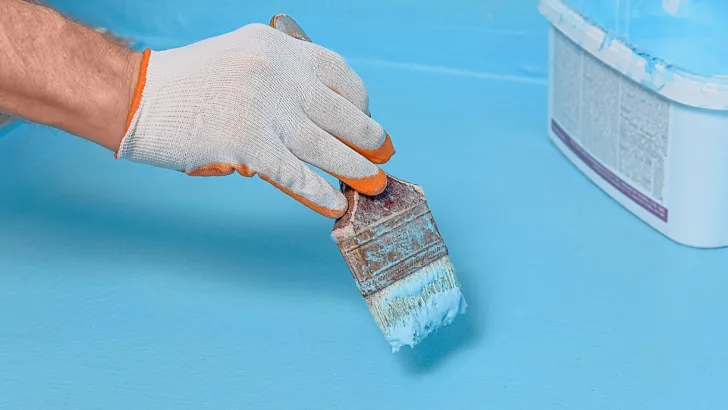
In addition to wall protection, another crucial area to address is the base of the toilet—the point of origin for potential splatters. Waterproof caulking can be a valuable asset here, acting as a safeguard against urine seepage into the floor. By applying waterproof caulking around the toilet’s base, you create a reliable barrier that prevents moisture and urine from infiltrating and causing damage.
By implementing these preventive steps, you’re taking proactive measures to ensure that your bathroom remains both visually appealing and structurally sound. The application of waterproof paint, especially in glossy finishes, along with the strategic use of waterproof caulking, offers a robust defense against urine-related challenges, contributing to a cleaner, more durable bathroom environment.
Clean Up Urine Spills Immediately
A swift response can make all the difference when it comes to maintaining the pristine condition of your bathroom walls. Keeping urine stains at bay begins with a simple yet crucial step: cleaning up any spills without delay. By taking prompt action, you’re taking a proactive stance that can effectively hinder urine from infiltrating your walls or floor, ensuring both visual appeal and structural integrity are preserved.
Urine spills, if left unattended, can swiftly seep into porous surfaces, potentially leading to persistent stains and even long-term damage. To avert this, arm yourself with a disinfectant cleaner and paper towels—the dynamic duo that can effectively tackle the task at hand. Gently blot the spill using absorbent paper towels, carefully removing any traces of urine before they have a chance to settle and penetrate.
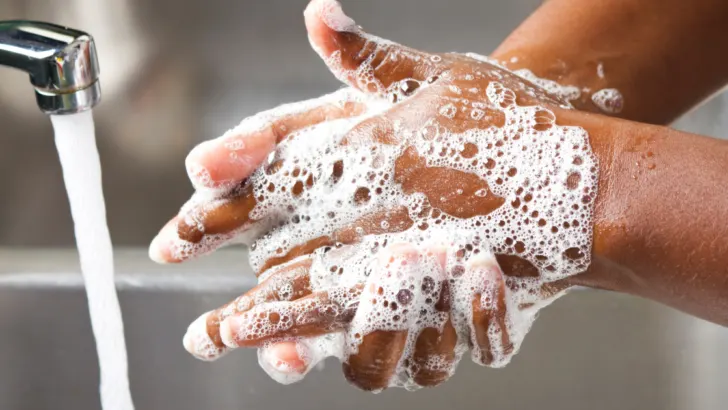
Once the immediate cleanup is complete, don’t forget to prioritize your personal hygiene. Thoroughly wash your hands afterward, minimizing any potential exposure to germs and bacteria. This dual approach—swift cleanup and vigilant hygiene—ensures that your bathroom remains a haven of cleanliness and well-being.
By ingraining this proactive habit into your bathroom care routine, you’re not only preventing unsightly stains but also safeguarding the longevity of your bathroom’s surfaces. With every swift cleanup, you’re actively contributing to the lasting appeal and functionality of your bathroom environment.
Ventilate the Bathroom Regularly
A breath of fresh air can work wonders in safeguarding your bathroom against potential urine stains and the accompanying challenges. Embracing the practice of proper ventilation is a cornerstone of responsible bathroom care—one that can significantly impact both the aesthetic appeal and the overall well-being of your bathroom space.
Effective ventilation, achieved through a functional fan or an open window, is your ally in preventing moisture accumulation. When urine splatters occur, the presence of adequate ventilation ensures that moisture is promptly whisked away, leaving a minimal opportunity for urine to linger and potentially seep into your walls or floor.
This strategic approach serves a dual purpose, as it not only contributes to the prevention of urine-related issues but also plays a pivotal role in combating the growth of mold and mildew. By allowing fresh air to circulate, you’re creating an environment that resists excess humidity—the very condition that mold and mildew thrive in.
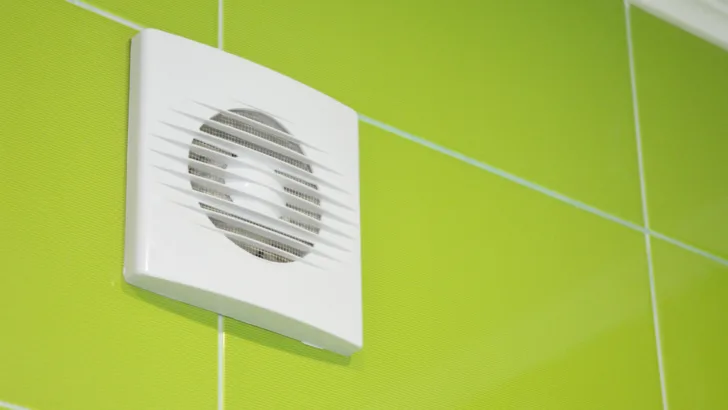
Regular ventilation routines also contribute to a more enjoyable and pleasant bathroom experience, promoting a space that feels clean, airy, and inviting. The invigorating effects of proper air circulation extend beyond just aesthetics, ensuring that your bathroom remains a sanctuary of comfort and health.
By incorporating regular ventilation into your bathroom maintenance regimen, you’re taking proactive measures to mitigate potential urine-related challenges. This simple yet impactful practice stands as a testament to your commitment to upholding a clean, hygienic, and well-ventilated bathroom environment.
Use a Dehumidifier to Control Humidity in the Bathroom
The quest for a flawlessly maintained bathroom encompasses various strategies, and among them, the role of a dehumidifier emerges as a game-changing ally. Embracing a dehumidifier as part of your bathroom maintenance toolkit is a strategic move that holds the key to maintaining optimal humidity levels and mitigating moisture-related concerns.
Excess humidity is a common adversary that can lay the foundation for an array of issues, from mold and mildew growth to unsightly stains. A dehumidifier steps in as a formidable solution, working tirelessly to extract excess moisture from the air and maintain an environment that is inhospitable to these unwanted visitors.
By controlling humidity, a dehumidifier directly addresses the root cause of potential bathroom woes. Moisture accumulation, which can be exacerbated by urine splatters or a lack of ventilation, is effectively managed, significantly reducing the risk of mold and mildew taking root on your bathroom walls.
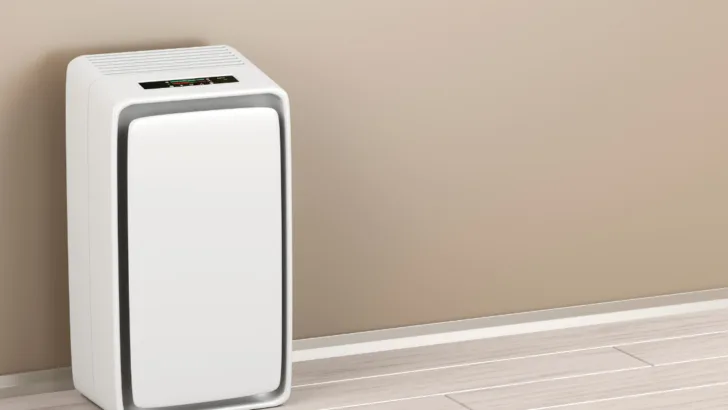
The impact of a dehumidifier extends beyond prevention—it fosters an atmosphere of comfort and cleanliness. The absence of excess moisture not only combats mold and mildew but also contributes to a bathroom that feels fresh, inviting, and free from dampness.
Integrating a dehumidifier into your bathroom regimen represents a proactive stance toward maintaining an impeccable bathroom environment. With its unobtrusive operation and compelling benefits, a dehumidifier becomes an essential tool in your quest for a bathroom that remains a sanctuary of hygiene, health, and aesthetic appeal.
By following these solutions, you can help protect your bathroom walls from urine stains and keep your bathroom looking clean and sanitary.
Additional Tips
Consider Installing a Training Potty with a Splash Guard
The journey of potty training is a significant milestone in a young child’s development, but it can also bring about a unique set of challenges for caregivers. A notable solution in your arsenal is the installation of a training potty equipped with a splash guard—a simple yet effective addition that can significantly impact the cleanliness and maintenance of your bathroom.
For parents and caregivers, a training potty with a splash guard acts as a reliable ally in minimizing the potential for urine splatters to reach your bathroom walls and floor. This proactive measure not only streamlines the cleanup process but also contributes to a more hygienic and visually appealing bathroom environment.
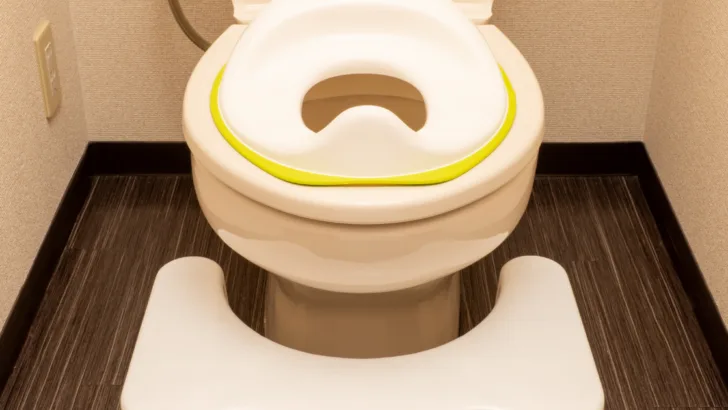
As you explore the myriad options of training potties available, consider a few key factors to ensure a seamless experience. Opt for a design that prioritizes easy cleaning, with removable components that simplify the aftermath of potty training sessions. Additionally, select a training potty with a sturdy and well-designed splash guard, ensuring that it effectively redirects splashes and contains any potential mess.
By thoughtfully choosing a training potty with a splash guard, you’re investing in a tool that aligns with your goals of cleanliness and simplicity. The training potty becomes a crucial companion in the potty training journey, supporting your child’s development while also minimizing the impact on your bathroom’s aesthetics and upkeep.
Clean Up the Urine Immediately If You Have a Pet That Has Accidents in the Bathroom
Sharing your living space with a furry companion brings joy and companionship, but it also entails a heightened level of vigilance, especially when it comes to bathroom hygiene. If you have a pet that occasionally has accidents in the bathroom, taking swift and decisive action is key to preserving the integrity of your bathroom’s surfaces.
Urine, even from well-loved pets, can pose a risk to your bathroom’s walls and floor if left untreated for an extended period. The naturally occurring acids in urine can gradually weaken surfaces, leading to discoloration, degradation, and potential odors. To mitigate these risks, it’s imperative to address accidents promptly.
When an accident occurs, reach for a pet-specific cleaning solution—a specialized ally designed to effectively neutralize urine and combat odors. Begin by blotting the affected area with absorbent material to remove as much moisture as possible. Then, follow the guidance of your chosen cleaning solution, thoroughly treating the area to ensure complete removal of urine and lingering odors.
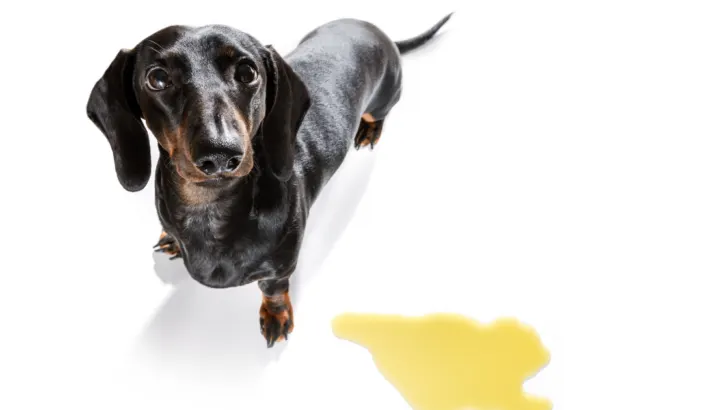
In your pursuit of comprehensive cleanliness, prioritize the importance of thoroughness. Scrub the area gently yet diligently, ensuring that every trace of urine is eliminated. Once the cleaning process is complete, allow the area to air dry completely before resuming regular use of the bathroom. This step is crucial in preventing any residual moisture from becoming a breeding ground for potential problems.
By embracing this proactive approach and staying vigilant in your bathroom maintenance routine, you’re safeguarding both the well-being of your beloved pet and the long-term condition of your bathroom. The harmony between pet companionship and pristine bathroom hygiene becomes an achievable goal through immediate action and thorough care.
Consider Installing a Backsplash to Protect the Walls from Urine Splash If You Have a Bathroom With Tile Walls
In bathrooms adorned with the elegance of tile walls, the allure of visual appeal comes hand in hand with the responsibility of maintenance. If you’re seeking a proactive approach to shielding your tile walls from potential urine splash, the installation of a backsplash emerges as a strategic solution—one that effortlessly combines functionality with style.
A backsplash serves as a protective barrier, standing as a formidable defense against urine splatters that can leave an unsightly mark on your bathroom’s aesthetic charm. Positioned behind the toilet and sink, this unassuming piece of material prevents urine and other liquids from reaching your tile walls, preserving their pristine appearance.

Diverse options in backsplash materials empower you to make a choice that seamlessly aligns with your bathroom’s design and your personal preferences. From the timeless charm of tile to the sleek modernity of glass or acrylic, the range of choices allows you to curate a backsplash that not only serves its protective purpose but also elevates the overall ambiance.
When selecting a backsplash, prioritize ease of maintenance—a quality that facilitates effortless cleanup and sustains the visual allure of your bathroom. Additionally, consider a material that harmoniously complements the existing style elements of your bathroom, ensuring a cohesive and pleasing aesthetic.
By embracing the installation of a backsplash, you’re embarking on a journey of both protection and enhancement. With its ability to safeguard your tile walls and accentuate your bathroom’s appeal, a backsplash becomes an integral part of your bathroom’s identity, harmoniously blending form and function.
By following these additional tips, you can protect your bathroom walls from urine and keep your bathroom clean and odor-free.
Related Post: Can I Use Bathroom Cleaner in the Kitchen?
Risk of Urinary Tract Infections and Respiratory Infections
As someone who has worked in the cleaning industry for several years, I know that urine can cause more than just unsightly stains and unpleasant odors on bathroom walls. In fact, urine can pose a risk to human health if not properly cleaned up.
One of the most significant risks associated with urine in bathrooms is the potential for urinary tract infections (UTIs). UTIs are caused by bacteria that enter the urinary tract, and the warm, moist environment of a bathroom can provide an ideal breeding ground for these bacteria. When urine is left to sit on bathroom walls or floors, it can create a perfect environment for bacteria to thrive, increasing the risk of UTIs for anyone who uses the bathroom.
In addition to UTIs, urine can also contribute to respiratory infections. When urine dries on bathroom surfaces, it can release ammonia fumes into the air. These fumes can irritate the lungs and cause respiratory problems, particularly in individuals with asthma or other respiratory conditions.
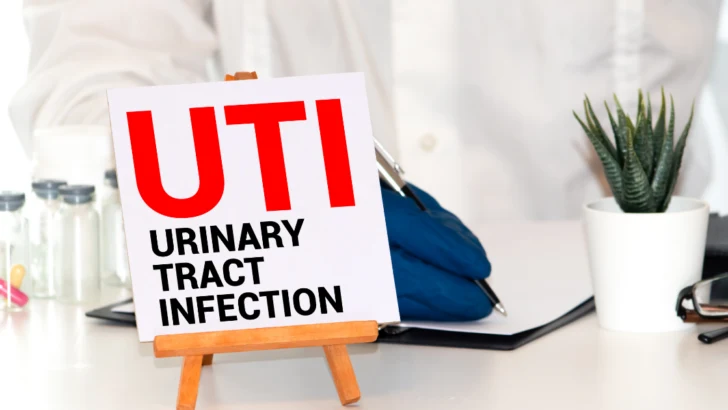
To minimize the risk of UTIs and respiratory infections, it is essential to clean bathroom surfaces thoroughly and regularly. This includes wiping down walls, floors, and other surfaces with an appropriate cleaner, as well as ensuring that all urine is properly flushed down the toilet. Additionally, it’s important to encourage good hygiene practices, such as washing hands thoroughly after using the bathroom and avoiding touching bathroom surfaces unnecessarily.
Overall, while urine on bathroom walls may seem like a minor inconvenience, it can pose a significant risk to human health if not properly addressed. By taking the necessary steps to clean and maintain bathroom surfaces, we can help prevent the spread of harmful bacteria and keep ourselves and others healthy.
Tips on How to Choose the Right Urine Guard or Waterproof Paint/Sealant for Your Bathroom
When it comes to protecting your bathroom walls from urine, choosing the right urine guard or waterproof paint/sealant is crucial. Here are some tips to help you choose the right one for your bathroom:
- Consider the Material: When choosing a urine guard or waterproof paint/sealant, consider the material of your bathroom walls. Some materials, such as drywall, are more porous and require a more robust sealant to prevent urine from seeping in. Other materials, such as tile, may require a different type of urine guard altogether.
- Look for Durability: Urine guards and waterproof paint/sealants should be durable and long-lasting. Look for products that are specifically designed for use in bathrooms and can withstand exposure to moisture and urine.
- Check for Compatibility: Make sure the urine guard or waterproof paint/sealant you choose is compatible with your bathroom fixtures and accessories. Some products may not be suitable for use with certain materials or finishes.
- Consider Ease of Application: Choose a urine guard or waterproof paint/sealant that is easy to apply and requires minimal preparation. This will save you time and effort in the long run.
- Read Reviews: Before making a purchase, read reviews from other customers who have used the product. This can give you valuable insight into the product’s effectiveness and durability.
By following these tips, you can choose the right urine guard or waterproof paint/sealant for your bathroom and protect your walls from urine damage.
Conclusion
In conclusion, protecting bathroom walls from urine is crucial to maintain the hygiene and cleanliness of your bathroom. The best way to protect the walls is by using a pee-specific coating or a homemade solution, using a toilet splash guard, or cleaning the walls with anti-urine products and ingredients constantly.
It is important to note that bathrooms do not contain waterproof walls, and urine can seep inside and damage their inner layer. Urine splashes on walls can also occur due to poorly trained children and pets. Therefore, taking preventive measures is necessary to avoid any unpleasant odor or bacteria growth.

Disposable mats, SanaGloss toilet coating, and white and clear caulking are some of the other options to protect bathroom walls from urine stains. These options are easy to use and can be effective in keeping your walls clean and hygienic.
Regular cleaning and maintenance of your bathroom walls is also important to prevent any urine stains or odors. By using the right cleaning products and techniques, you can keep your bathroom walls clean and free from any unwanted marks.
Overall, protecting bathroom walls from urine is not a difficult task, but it does require some effort and attention. By following the tips and tricks mentioned in this article, you can ensure that your bathroom walls remain clean, hygienic, and odor-free.
Resources
- HomeAdvisor (https://www.homeadvisor.com/)
- Houzz (https://www.houzz.com/)
Frequently Asked Questions
How can I prevent urine from splashing onto my bathroom walls?
To prevent urine from splashing onto your bathroom walls, you can use a toilet splash guard. This will help direct urine into the toilet bowl and prevent it from splashing onto the walls. You can also try using a pee-specific coating or a homemade solution to protect your bathroom walls from urine damage.
What kind of caulk is best for preventing urine damage?
For preventing urine damage, it is recommended to use white or clear silicone caulk. This type of caulk is waterproof and resistant to urine damage. It also provides a smooth and seamless finish that is easy to clean.
Are there any DIY solutions for protecting bathroom walls from urine?
Yes, there are several DIY solutions for protecting bathroom walls from urine damage. You can use a mixture of vinegar and water to clean urine stains and prevent them from spreading. You can also use baking soda to absorb urine odors and prevent them from lingering.
What materials are best for bathroom walls to resist urine damage?
Materials that are best for bathroom walls to resist urine damage include ceramic tiles, glass, and acrylic. These materials are waterproof and resistant to urine damage. They also provide a smooth and seamless finish that is easy to clean.
How do I clean urine off of my bathroom walls?
To clean urine off of your bathroom walls, you can use anti-urine products and ingredients such as vinegar, baking soda, and hydrogen peroxide. Wear protective gear such as gloves and eyewear before beginning the cleaning process. Apply the cleaning solution to the affected area and scrub gently with a soft-bristled brush. Rinse the area with water and dry it with a clean cloth.
Can a pee guard for the toilet help protect bathroom walls from urine damage?
Yes, a pee guard for the toilet can help protect bathroom walls from urine damage. It helps direct urine into the toilet bowl and prevents it from splashing onto the walls. Pee guards are easy to install and can be purchased at most home improvement stores.
